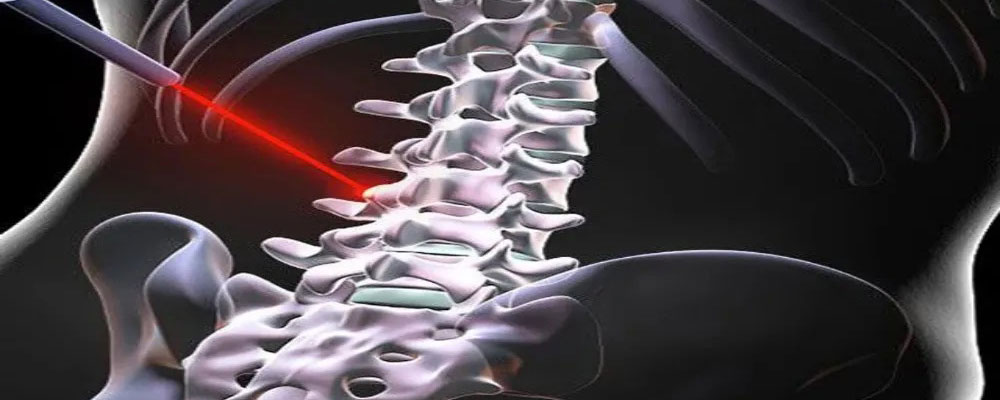Yashoda Hospital physicians are continually seeking new methods to provide our patients with the most cutting-edge therapies. Our practice is committed to assisting people in achieving relief and reclaiming their quality of life. Sciatica, a painful ailment caused by an intervertebral disc herniation, is a prevalent cause of back discomfort. Sciatica is a discomfort that spreads down the route of the sciatic nerve, which runs from your lower back to your hips and down each leg.
This type of discomfort often affects only one side of the body. Sciatica pain usually goes away in a few weeks, but for some people, it never goes away and can cause limb paralysis and bowel or bladder problems. Percutaneous laser disc decompression can relieve discomfort and get you back on track in these extreme situations.

Percutaneous laser disc decompression, or PLDD, is a non-surgical therapy for confined lumbar disc herniation. Because this treatment is performed percutaneously, or via the skin, the recovery period is significantly shorter than that of regular surgery. Generally, people can return to work within a few days after the operation.
Laser therapy for lumbar disc herniation has been used since the 1980s; thus, the track record of this approach is highly promising. The nucleus pulposus, the inner core of the spinal disc, is evaporated by PLDD. This extra fluid places pressure on the sciatic nerve, producing discomfort. By draining this fluid, the pressure on the sciatic nerve is relieved.
Fluoroscopy is used in this treatment to locate the herniated disc. Under local anaesthesia, a needle is inserted into the intervertebral disc. The laser fibre is sent through the needle to the afflicted disc, where it evaporates the surplus fluid. The patient is discharged, and is generally back on their feet within a few days.
PLDD is effective for more than just treating sciatica. This treatment can also be used to treat herniated discs, radiculopathy, and spinal stenosis. Except for T1-T4, it can be used to treat disc herniation in any vertebra. Treating disc herniations can help reduce radiculopathy, and radiating pain in the lower back.
Spinal stenosis, or narrowing of the gaps in the spine, can put pressure on the nerves that run through it, resulting in bulging discs and lower back discomfort. Percutaneous laser disc decompression has been established in studies to be a safe and effective alternative to surgery for spinal stenosis.

Although an ideal patient has an untreated disc herniation with no disc fragments, PLDD has been used to treat herniations that have failed surgical treatment.
The majority of PLDD patients have:
For the proper patient, PLDD can be an effective surgery.
Other benefits include:
CT fluoroscopy includes the use of X-rays to create pictures that are then augmented with contrast dye. This enables physicians to accurately insert the needle used in PLDD.
This energy, in the form of heat, decreases the pressure within the disc. As a result, the projecting disc fragment is pulled back through the outer layer of the disc, reducing pressure on the nerve roots.
Request an appointment with Dr. Ravi Suman at Yashoda Hospital if you are contemplating laser spine surgery. We can help you decide whether PLDD is the correct surgery for you, create a treatment plan, and get you on the path to recovery.
Infection, nerve damage and inflammation of intervertebral disc are some of the rare risks of PLDD.
Generally, people report pain relief from PLDD for about a year after receiving the treatment.
PLDD is less effective in case of large extrusions and sequestrations. The location, size and type of disc herniation play important role in procedure’s success.
Since PLDD is a minimally invasive procedure, the person will be able to return to work the next day.